EcoStart

BRIEF INTRODUCTION: Good day everyone all over the world, and I extend my greetings to all my dear readers. I welcome you all once again to this Wonderful CRYPTOCURRENCY NETWORK BLOG, as usual ! all of you know’s, I always carry you along with any information about good crypto related projects through my blog.
According to the main purpose or fixed design of this article , I will be presenting you a brief introduction about blockchain
A blockchain is a growing list of records, called blocks, which are linked using cryptography. Each block contains a cryptographic hash of the previous block, a timestamp, and transaction data (generally represented as a merkle tree root hash)
By design, a blockchain is resistant to modification of the data. It is “an open, distributed ledger that can record transactions between two parties efficiently and in a verifiable and permanent way For use as a distributed ledger, a blockchain is typically managed by a peer-to-peer network collectively adhering to a protocol for inter-node communication and validating new blocks. Once recorded, the data in any given block cannot be altered retroactively without alteration of all subsequent blocks, which requires consensus of the network majority. Although blockchain records are not unalterable, blockchains may be considered secure by design and exemplify a distributed computing system with high Byzantine fault tolerance. Decentralized consensus has therefore been claimed with a blockchain.
Blockchain was invented by Satoshi Nakamoto in 2008 to serve as the public transaction ledger of the cryptocurrency bitcoin. The invention of the blockchain for bitcoin made it the first digital currency to solve the double-spending problem without the need of a trusted authority or central server. The bitcoin design has inspired other applications, and blockchains which are readable by the public are widely used by cryptocurrencies. Private blockchains have been proposed for business use. Sources such as the Computerworld called the marketing of such blockchains without a proper security model.
The first work on a cryptographically secured chain of blocks was described in 1991 by Stuart Haber and W. Scott Stornetta. They wanted to implement a system where document timestamps could not be tampered with. In 1992, Bayer, Haber and Stornetta incorporated Merkle trees to the design, which improved its efficiency by allowing several document certificates to be collected into one block.
The first blockchain was conceptualized by a person (or group of people) known as Satoshi Nakamoto in 2008. Nakamoto improved the design in an important way using a Hashcash-like method to add blocks to the chain without requiring them to be signed by a trusted party.[6] The design was implemented the following year by Nakamoto as a core component of the cryptocurrency bitcoin, where it serves as the public ledger for all transactions on the network.
In August 2014, the bitcoin blockchain file size, containing records of all transactions that have occurred on the network, reached 20 GB (gigabytes). In January 2015, the size had grown to almost 30 GB, and from January 2016 to January 2017, the bitcoin blockchain grew from 50 GB to 100 GB in size.
The words block and chain were used separately in Satoshi Nakamoto’s original paper, but were eventually popularized as a single word, blockchain, by 2016. The term blockchain 2.0 refers to new applications of the distributed blockchain database, first emerging in 2014. The Economist described one implementation of this second-generation programmable blockchain as coming with “a programming language that allows users to write more sophisticated smart contracts, thus creating invoices that pay themselves when a shipment arrives or share certificates which automatically send their owners dividends if profits reach a certain level.
As of 2016, blockchain 2.0 implementations continue to require an off-chain oracle to access any “external data or events based on time or market conditions that need to interact with the blockchain.
IBM opened a blockchain innovation research center in Singapore in July 2016. A working group for the World Economic Forum met in November 2016 to discuss the development of governance models related to blockchain.
According to Accenture, an application of the diffusion of innovations theory suggests that blockchains attained a 13.5% adoption rate within financial services in 2016, therefore reaching the early adopters phase. Industry trade groups joined to create the Global Blockchain Forum in 2016, an initiative of the Chamber of Digital Commerce.
In May 2018, Gartner found that only 1% of CIOs indicated any kind of blockchain adoption within their organisations, and only 8% of CIOs were in the short-term ‘planning or [looking at] active experimentation with blockchain.
In reference with the motion of this article, Today! I will be presenting you a particular undisputed project called: EcoStart
WHAT IS EcoStart?
.jpg)
Ecostart is a public distributed cryptographic platform for creating applications and software solutions on an open blockchain. The platform is created for financial support of ecological and nature protection projects. The core of Ecostart will be TerraEcocoin's own cryptocurrency (TECO), which generates the Proof-of-Importance algorithm.
The core of the platform is the TECO cryptocurrency, which is generated using the Proof-of-Importance algorithm.
EcoStart will be a reliable platform for creating applications for funding in “green” projects, in the sphere of ecology and sharing the economy.
Our goal is to increase investment in green projects and tokenization of investment activities.
EcoStart Blockchain has all the necessary characteristics for this:
• Fast transactions about 100 K transactions per second
• Mobility
• Transparency
• Democracy
• Lack of intermediaries;
• Energy saving verification protocol (up to 100 times less than for Bitcoin)
• Low transaction cost
• Smart contracts with new advanced features and tools for creating it.
EcoStart MAIN OBJECTIVES

- Development of technology blockade
- Attracting capital to finance environmental projects and start-ups
- Stimulating environmental activism and supporting environmental initiatives
- Bringing the attention of society, the media, business community and authorities to environmental issues
- Promoting volunteering and sponsorship in the environmental field.
We use the Proof-of-Importanc (POI) algorithm for the creation of the application for the open project finance, the encrypted currency TerraEcocoin (TECO), and its generation. Ecostart - Environmental Movement Participant Integrators at General Website (Market): - Search for environmental projects for investment. - To raise funds for investing in environmentally friendly projects. - Search and adjust for volunteer activities - Form the actual evaluation of platform users (initiators, investors, experts, volunteers) - Obtain objective recommendations.
EcoStart WORKS
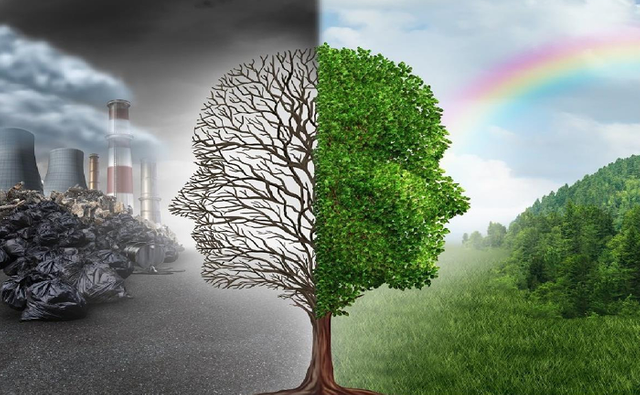
The platform will be created on Ecostart’s block system that will meet its requirement for cost-effectiveness, reliability, and speed. Currently, the ecosystem uses Ethereum where smart contracts at the ICO stage are written on it. The platform combines several technological solutions including applications that are already in use, into a single system.
EcoStart uses the blocking technology to solve several tasks at the same time, from the creation of fundraising services to writing down information on trading operations of clients and to the sale of tokens in the ICO. With the transparency aspect of the blocking technology, customer confidence in EcoStart grows to admirable levels.
The EcoStart Ecosystem has seen the integration of the TECO cryptocurrency to enable all ecosystem services to be carried out with it. With increased transactions and activities on the EcoStart platform, and the higher the participation of buyers and sellers of the cryptocurrency, the more benefits all participants will receive.
The development of the cryptosinger as a communication channel also opens up environmental enthusiasts to a convenient and functional mode of communication in the ecological community while ensuring maximum confidentiality and anonymity.
EcoStart FEATURES

1) Observation of the ecology anywhere in the world
Monitoring in minutes. The participant enters the geoportal - selects a point - and he sees the real ecological picture in the selected region.
2) Simple fundraising for environmental projects
Without banks, bureaucracy and significant costs.
3) Each community member will be able to create their own applications for environmental projects.
The logic of the applications will provide smart contracts, and integration with third-party resources - an open API for developers.
4) Part of the commission from the TECO transaction is automatically sent to the environmental fund
When community members perform financial transactions among themselves, the commission from these transactions replenishes the investment fund (IEF), which funds green projects.
THE EcoStart ROADMAP
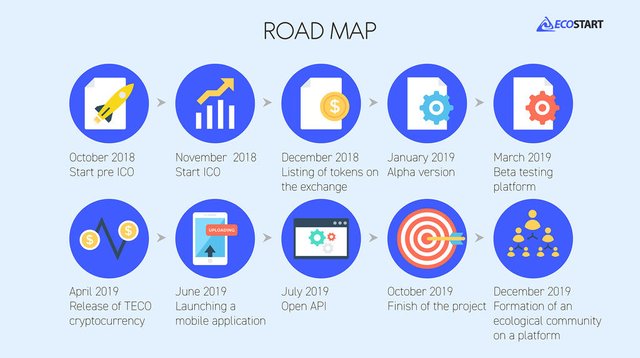.jpg)
THE EcoStart TEAM AND ADVISORS BOARD
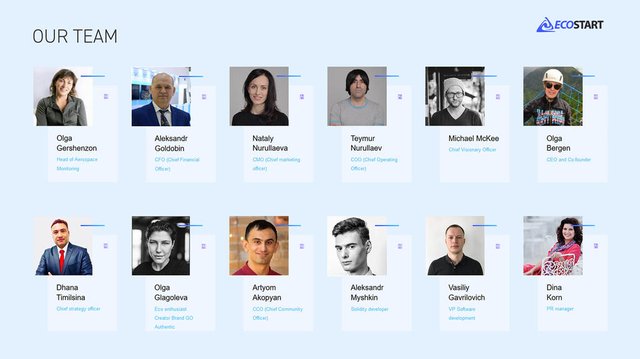.jpg)
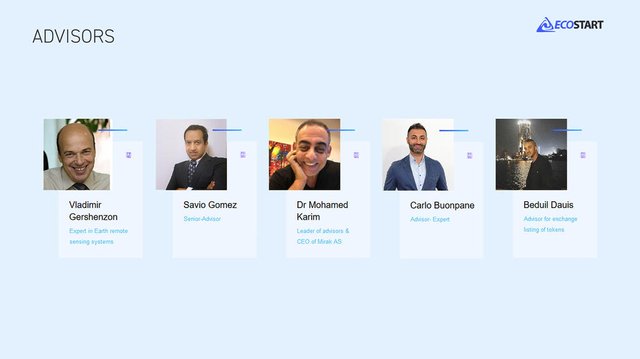.jpg)
THE EcoStart PARTNERS
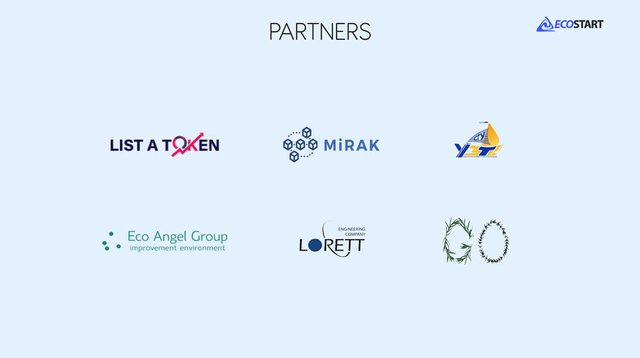.jpg)
THE EcoStart ICO AND TOKEN ANALYSIS

Pre-ICO: 19.11.2018 - 09.12.2018 | BONUS:
ICO : 10.12.2018 - 31.01.2019 | Price : 1 TER = $0.1 USD
TerraEcocoin TECO is a private cryptocurrency, the only one in the world that financially supports environmental projects in an automatic mode. The TerraEcocoin in the hands of investors and entrepreneurs who finance environmental campaigns will see an increased attraction of capital for environmental projects and an environmental audience that have specific goals in implementing environmental projects.
The EcoStart platform in conjunction with IEF will see the consolidation of funds in Cryptotics and allocated for the implementation of ecological projects in the form of grants and investments approved by the majority coin holders of the TerraEcocoin.
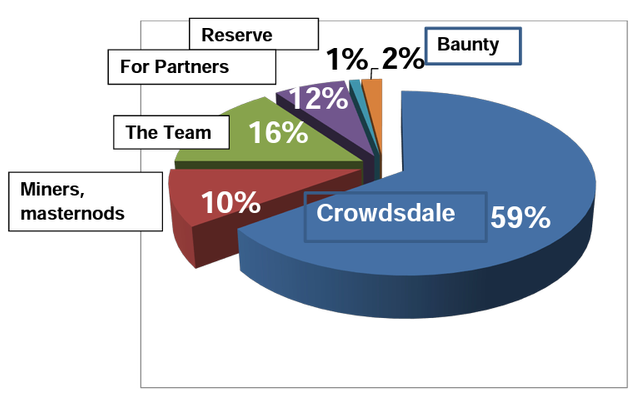
The release of the TECO cryptocurrency is a step towards achieving this goal and with the decentralized fundraising application- investment environmental fund (IEF) there will be the creation of a personal digital token and much more. This will enable initiators of environmental projects to create their own tokens that they can use as product tokens, shares in the project, electronic cryptoexels and participation certificates.
The tokens are issued by a single or accelerated emission for a specific project and approved by the Ecostart platform comprising of an expert community of authorized trackers.
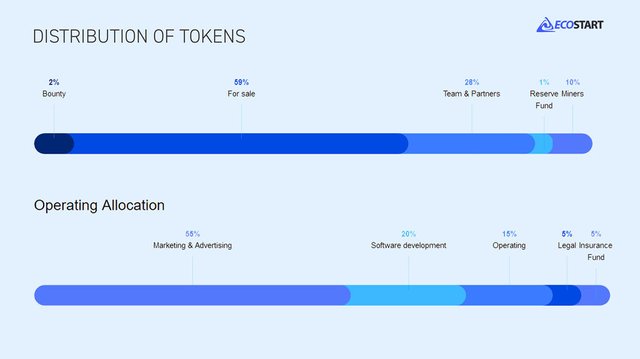.jpg)
MY OPINION CONCERNING THIS PROJECT
In my own perspective, I can see EcoStart as an innovative, incomparable and undisputed project with a great vision and unique ambition to be the most smartest and respective projects in the nearest future all over the globe.
CONCLUSION:
Nowadays a lot of projects are being created in different countries, But not much of them with solid standard and good qualities as EcoStart does.
information:
WEBSITE: https://eco-start.com
WHITEPAPAPER: https://eco-start.com/docs/pdf/wp_en.pdf
TWITTER: https://twitter.com/start_eco
FACEBOOK: https://www.facebook.com/ecostart.eb.9
TELEGRAM: https://t.me/ecostart2018
Author
Bitcointalk profile link: https://bitcointalk.org/index.php?action=profile;u=2410389
Tidak ada komentar:
Posting Komentar